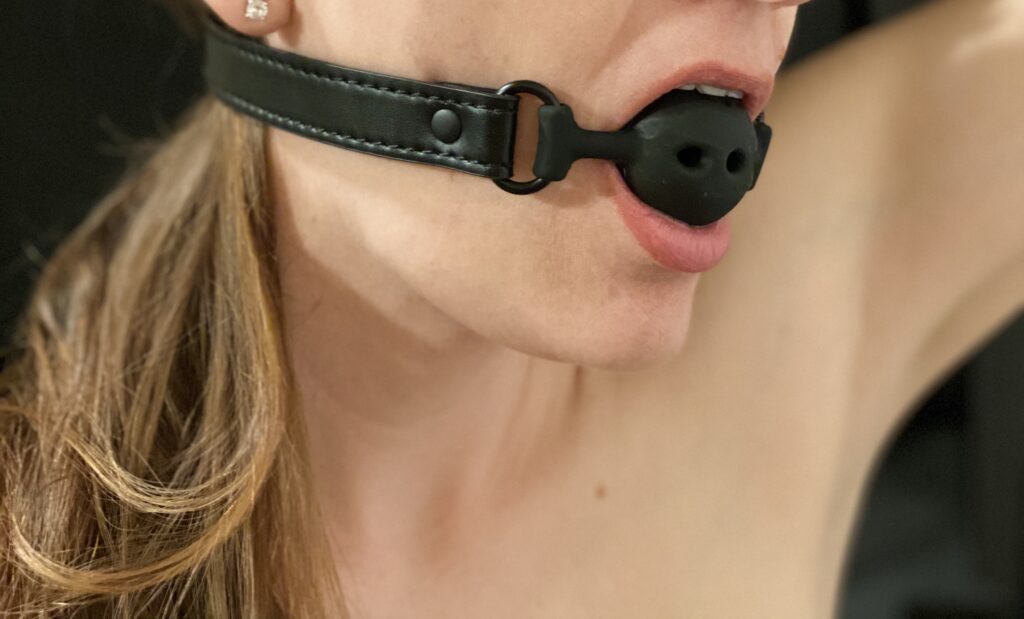Types of Bondage: A Journey into the Realm of Restraint

Embarking on a journey into the realm of BDSM can be thrilling, exhilarating and, for some, a little intimidating. One essential aspect that often piques fascination is all the different types of bondage. We’ll explore the vast variations of bondage types. From Shibari bondage, predicament bondage, to even torture bondage, each method serves a unique purpose. We even have a free guide to help you get started!
IN THIS ARTICLE
Understanding the Different Types of Bondage
Without a doubt, bondage is a key part of BDSM and it comes in many forms. Each offers its own unique experience to fit different tastes and interests. Whether you’ve tried it before or are just curious, I welcome you to explore the wide world of bondage with me.
We’ll look closely at each type, focusing on how important it is to always practice consent, safety, and respect for you and your partner. Let’s dive into the various kinds of bondage and discover what makes each one unique.
Shibari Bondage

Shibari is a form of bondage from Japan that’s much more than just tying someone up. It’s also considered an art form. This detailed way of using ropes creates stunning patterns on the body, showing off both the beauty and the skills of the Rigger and rope bunny.
Shibari is all about trust and communicating verbally or silently as you go. This makes it a very intimate and exciting experience for everyone involved. It takes a lot of patience, skill, and a good understanding of how bondage affects both the body and mind. The mix of seeing the ropes, smelling their fibers, and feeling them tighten can make Shibari a very deep experience that touches all of the senses.
Predicament Bondage
Predicament bondage adds a twist of mental challenge to being tied up. In this type of bondage, the person in the submissive role has to pick between two tough choices. For example, having to choose between standing on your tiptoes to relieve pain from an opposing pull on your arms.
What makes predicament bondage stand out is the mental game. It’s not only about being physically tied up though. It’s also about struggling and facing a situation that really makes you think and get involved mentally. This makes it a very engaging experience. Doing predicament bondage well needs creativity and a strong understanding of your partner’s limits to keep it safe and sane.
Torture Bondage

Torture bondage is usually meant to cause pain or discomfort. However, it’s always done with everyone agreeing and knowing the limits ahead of time. This type of bondage isn’t for everybody, and I don’t recommend it for beginners. However, some people really like the strong feelings and the mind games of controlling or giving control.
To keep torture bondage safe and consensual, it’s very important to know your own limits and your partner’s. You should also communicate throughout, and have a safeword you can use if it gets too much. Torture bondage is also a great way to explore CNC, or consensual non-consent.
The Importance of Safety and Consent
When exploring bondage, especially more intense forms like torture bondage or the physically demanding Shibari, safety and consent are extremely important. BDSM is founded on the principles of SSC (Safe, Sane, and Consensual) and RACK (Risk Aware Consensual Kink).
Before diving into any bondage practice, it’s crucial to have open and honest discussions about boundaries, desires, and potential risks. Establishing a safeword or gesture is essential for maintaining control and ensuring the safety of everyone involved.
Bondage as a Means of Exploration and Connection
Beyond the physical aspect, bondage offers kinksters a unique way to explore their boundaries, build trust, and deepen their connection. For one thing, the act of tying or being tied can be incredibly sensual and intimate. It also offers a form of communication that goes beyond words.
The trust involved in allowing yourself to be vulnerable and restrained, or in taking on the responsibility of the Dominant role, can strengthen relationships and create a deep bond.
Tools and Accessories
Exploring different types of bondage can also introduce you to a variety of tools and gear. From simple rope and handcuffs to more elaborate setups like bondage furniture, the tools you choose can enhance your experience and bring your fantasies to life. Therefore, it’s important to invest in quality equipment and to learn how to use it safely to prevent injury.

My List of Favorite Tools
- Ropes: Used in various bondage practices, including Shibari. They come in different materials like cotton, hemp, or nylon.
- Cuffs: Metal or padded cuffs used for restraining wrists or ankles.
- Bondage Tape: A self-adhesive tape that sticks only to itself.
- Collars: Worn around the neck, often as a symbol of submission. Some have rings for attaching other restraints or leashes.
- Blindfolds: Used to deprive the sense of sight, heightening the sub’s other senses
- Gags: Designed to mute or limit the speech of the submissive. Common types include ball gags, bit gags, and cloth gags.
- Restraint Systems: These include under-bed restraints, over-the-door restraints, and bondage furniture.
- Spreader Bars: Bars with cuffs at each end, used to keep the legs or arms apart.
- Bondage Benches: Furniture designed for bondage.
- Suspension Gear: Equipment for advanced bondage, allowing the submissive to be suspended off the ground. This includes hooks, frames, and pulley systems.
- Nipple Clamps: Clamps applied to the nipples for sensation play.
- Chastity Devices: Devices to prevent genital stimulation or intercourse.
- Hogtie Connectors: Connectors used to bind someone’s wrists to their ankles, typically behind their back.
- Leashes: Attached to collars for leading or controlling the movement of the submissive.
Disclaimer: It’s important to remember that all these tools should be used with a thorough understanding of their operation and safety considerations. Play responsibly!
Embarking on Your Bondage Journey: Next Steps
As you can see, exploring different types of bondage can be a deeply fulfilling aspect of BDSM. It offers endless possibilities for connection, pleasure, and self-discovery. Whether you’re drawn to the aesthetic beauty of Shibari, the mental challenge of predicament bondage, or the intense sensations of torture bondage, there’s a world of experiences waiting for you.
Above all, as you embark on this journey, remember to prioritize safety, consent, and open communication. And don’t forget, our free guide is here to help you get started. With the right approach, bondage can be a safe, consensual, and thrilling way to explore your desires and deepen your connection with your partner. Happy exploring!
Download your free guide:
Want more? Sign up for my newsletter and get BDSM tips on the regular.



